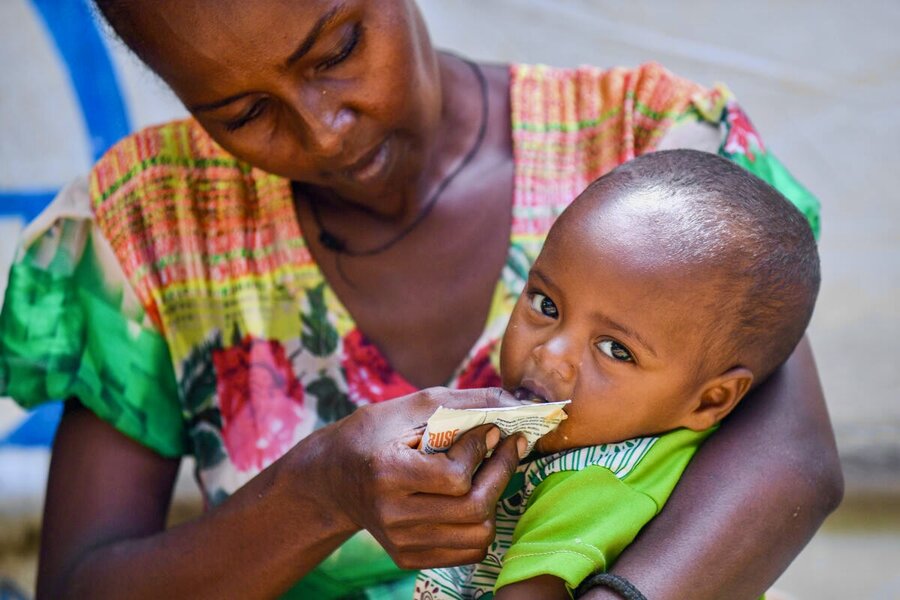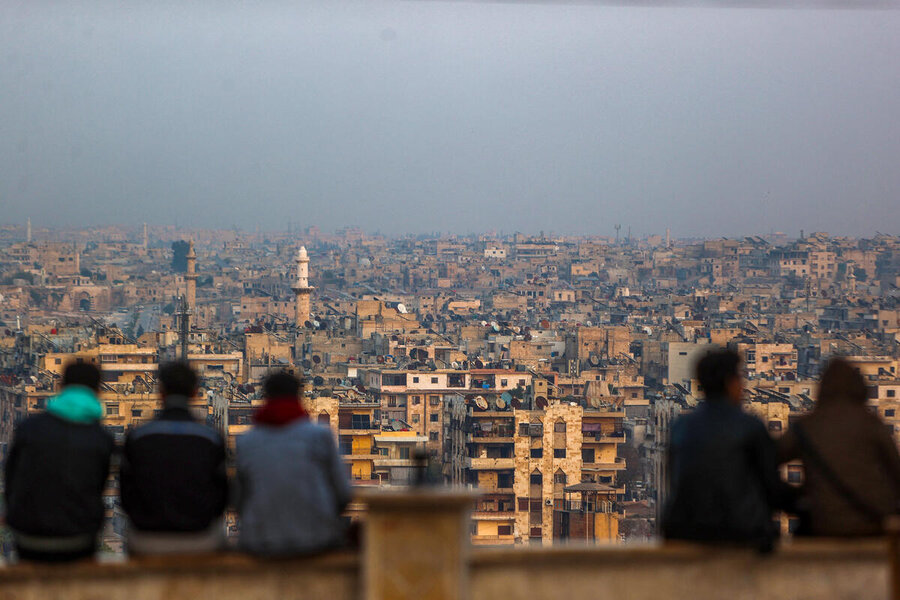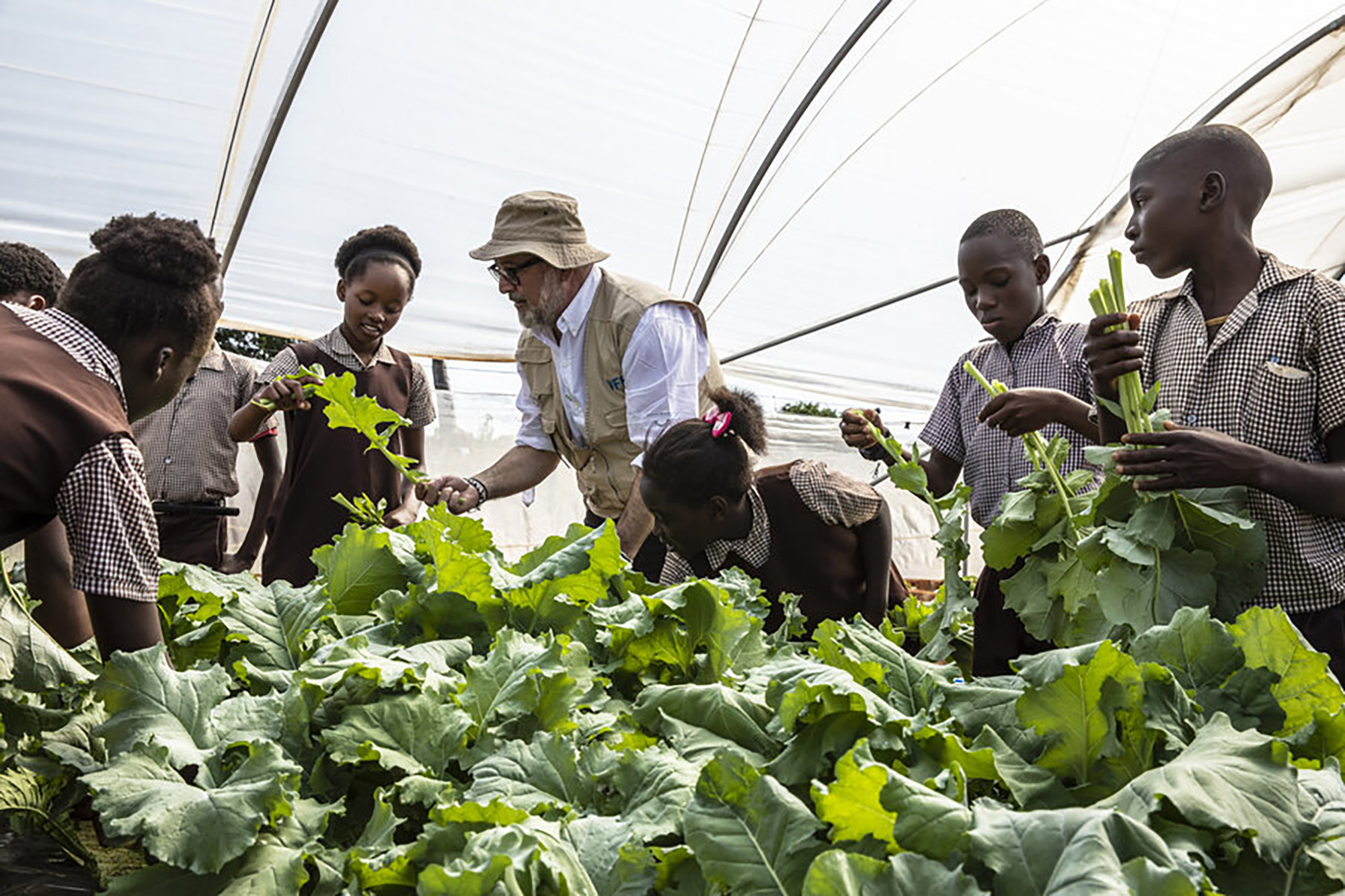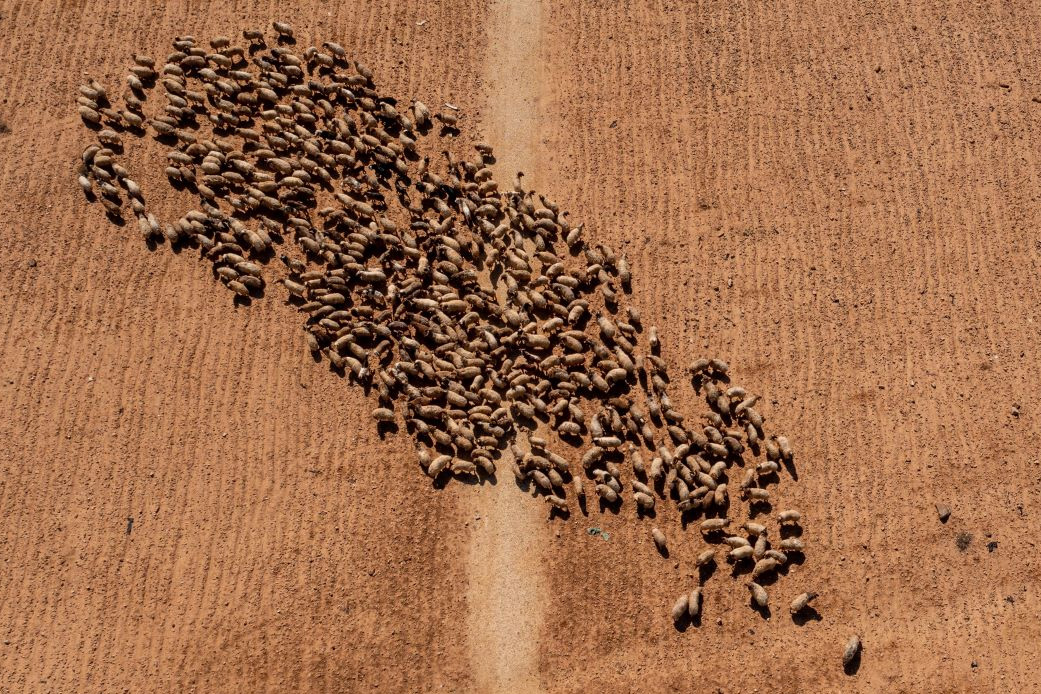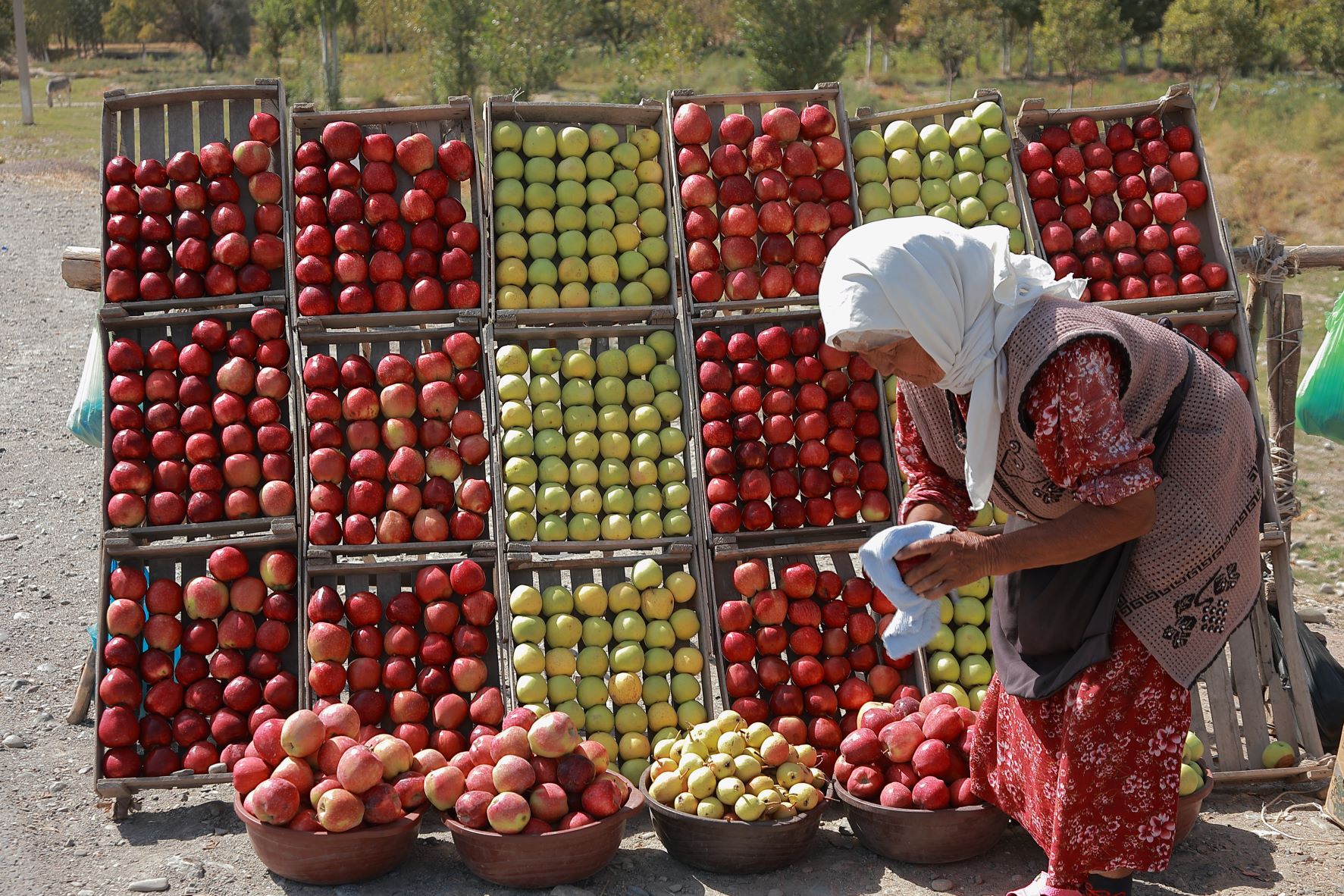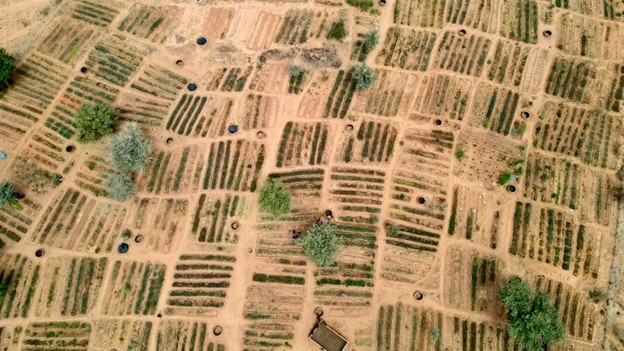The darkest moments for Nyanene Gatdoor come when her 2-year-old son Tuach sobs from hunger. “When the baby is crying in front of you, and you have nothing to give him, you feel pain in your heart,” says the 25-year-old mother of 3.
SDG 2: Zero Hunger
The World Food Programme is urgently seeking $250 million to support 2.8 million displaced and food-insecure people across Syria. Ongoing conflict has exacerbated the food security crisis, with 12.9 million Syrians affected by food insecurity. Disrupted supply routes, soaring food prices, and a weakening currency have deepened the crisis. While WFP has been providing critical food aid, additional funding is essential to continue these efforts and prevent further hardship in the region.
“We want people to scream at the top of their lungs saying enough is enough […] We as humanity will not tolerate this, regardless of what and where it is happening.”
Arif Husain has spent the past decade raising his voice on behalf of those struggling to get enough to eat. Now Chief Economist at the World Food Programme (WFP), he is calling for the world to put a stop to mass hunger.
There is no shortage of food in the world, yet WFP says the number of people going hungry has more than doubled in the past five years. In this episode of Awake at Night, Arif Husain reflects on how the deadly trio of conflict, climate change and economics conspire to breed hunger, and offers listeners hope from a surprising source.
Photo: ©WFP/Inger Marie Vennize
While rising costs, climate, conflict, and war all continue to impact global food insecurity, WFP remains committed to the UN Sustainable Development Goals: specifically, SDG Goal 2: Zero Hunger.
The Democratic Republic of Congo, along with Afghanistan, Yemen, and Syria, is among the countries that face the biggest emergencies when it comes to food according to the World Food Programme (WFP). Decades of conflict and climate change have reduced people's access to basic foods, leading to unprecedented levels of hunger. Despite the growing humanitarian needs and the global funding crisis that the WFP is trying to manage, the tragic situation in the eastern part of DRC still receives very little attention. As the African Cup of Nations attracts all the attention, it's important to reflect on what could be possible for the children of DRC, and more broadly, the children across the Continent.
“Our job is to give hope and help by giving food to those who really need it most. And that's what we do.”
World Food Programme (WFP) Executive Director Cindy McCain has many pressing reasons to lie awake at night. As Head of WFP, it is her job to make sure the millions of vulnerable people around the world who are relying on UN food assistance – from Gaza to Sudan to Afghanistan – don’t starve. In this episode, recorded four weeks into the war in Gaza, Cindy McCain reflects on finding hope in desperate situations, and raising her voice for the world’s forgotten millions.
Hunger is still one of the biggest – and most solvable – problems globally, causing 783 million people around the world to go to bed on an empty stomach every night.
“[Donation gaps mean] I'm taking food from hungry people and giving it to starving people. That's a heck of a decision to have to make.”
Photo: ©WFP/JulianCiviero
In the past year, the World Food Programme (WFP) has suffered the worst funding shortfalls in its 60-year history: we raised just US$7.5 billion of our projected costs of US$23.5 billion. This has resulted in colossal reductions in the number of people we serve. With 333 million people facing acute hunger, we were forced to cut rations outright for millions of people in countries such as Syria, the Democratic Republic of the Congo, Haiti and Yemen, pushing families deeper into hunger. The tragic irony is that many of the places where WFP operates should not only be thriving, but producing food for people in other countries. At the beginning of 2023, Matthew Hollingworth, WFP's Country Director for Ukraine, summed it up neatly: “We’re delivering food assistance in one of the most fertile countries in the world. It’s perverse." Read details on these cuts here
Andrew Zimmern, an award-winning American chef and World Food Programme (WFP) Goodwill Ambassador visited Gwembe Primary School in southern Zambia earlier this year to learn about sustainable growing practices. Zambia has been facing the challenge of building resilient and healthy food systems amid a deepening climate crisis. Buffeted by both floods but especially recurrent droughts, the southern African nation has seen its annual rainfall steadily decrease over the past decades — even as average temperatures are expected to soar by up to 3℃ by 2050. WFP is working with Zambian authorities and other partners to give farmers weather and climate information that can guide their choices about what and when to plant, and ways to diversify their livelihoods to better withstand climate shocks.
The latest Hunger Hotspots report, elaborated jointly by two UN agencies, highlights urgent humanitarian emergencies in 18 countries at risk of food insecurity and starvation. The conflict in Israel and Palestine has drawn attention away from other countries, including Burkina Faso, Mali, South Sudan, and Sudan, which are at risk of serious deterioration in food security. The report also warns of acute food insecurity in Palestine due to the escalation in conflict and recommends a ceasefire and access to aid delivery. Conflict remains a major driver of hunger globally, with the Sahel region experiencing instability and violence, resulting in a surge of fatalities.
According to UNICEF estimates, almost 45 million children are affected by wasting – the most immediate, visible and life-threatening form of malnutrition. Children with wasting are too thin and their immune systems are weak, leaving them vulnerable to developmental delays, disease and death. The UN agency has been working to highlight the magnitude of the nutrition crisis and working with partners to reach children in the countries that are particularly affected. But sustained funding is needed to ensure that UNICEF can continue expanding this work, including through game-changing partnerships like the Child Nutrition Fund.
One in nine people globally experienced hunger in 2022. Rural people and vulnerable groups, including women, suffer greater food insecurity—and even those who can access food may not be able to access nutritious food, IFAD's data confirms. We must strengthen climate resilience across food systems and invest in small-scale farmers so they can continue to feed themselves, nearby urban centres and beyond if we are to achieve the Sustainable Development Goals. IFAD supports small-scale producers and partners with farmers’ organizations to promote collective action and economies of scale.
The meals offered by Shree Kakani Ganesh Primary School, in Nepal are part of a broader effort to give young school children a healthy start. With more than one-fourth of Nepal’s children under 5 suffering from malnutrition, the school meals are a game changer. Under WFP’s Home-Grown School Feeding initiative, children are fed with different nutritious hot meals daily resulting in fewer children missing school. Food is sourced from local smallholder farmers which in turn has seen an increase in the local communities income and strengthened economy while improving family dynamics in Nepal.
While global hunger numbers have stalled between 2021 and 2022, there are many places in the world facing deepening food crises. Africa remains the worst-affected region with one in five people facing hunger on the continent, more than twice the global average. According to the latest State of Food Security and Nutrition in the World (SOFI) report by FAO, over 122 million more people are facing hunger due to the pandemic and repeated weather shocks and conflicts.
The thermometer is already hovering near 40°C (104°F) before noon in a remote village in Niger’s southwestern Tillaberi region. Despite these high temperatures, WFP-supported community gardening initiative, Integrated Resilience Programme, has transformed the once-barren earth with promising payoffs for the farmers. In regions severely affected by the food crisis, a striking 80 percent of villages benefitting from WFP resilience activities did not require humanitarian assistance last year. These initiatives include land rehabilitation where more than 233,000 hectares have been rehabilitated since the initiative’s launch in 2014.
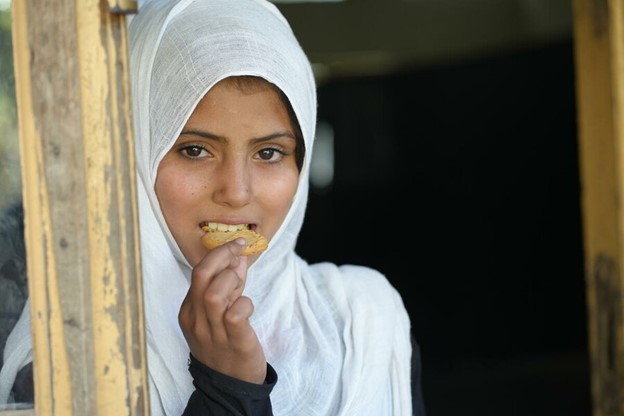
Empty stomachs, hard times for Afghanistan's girls
Today, as Afghan girls and women face growing education and work restrictions — and are hardest hit by the country’s hunger crisis — reaching students like Hazra is more important than ever. Indeed, nearly half the children WFP reaches with school feeding support are girls. Launched in Afghanistan more than two decades ago, WFP’s school feeding programme — which also includes nutrition snacks made of local ingredients — aims to link food security and better nutrition with education among school-aged children.

